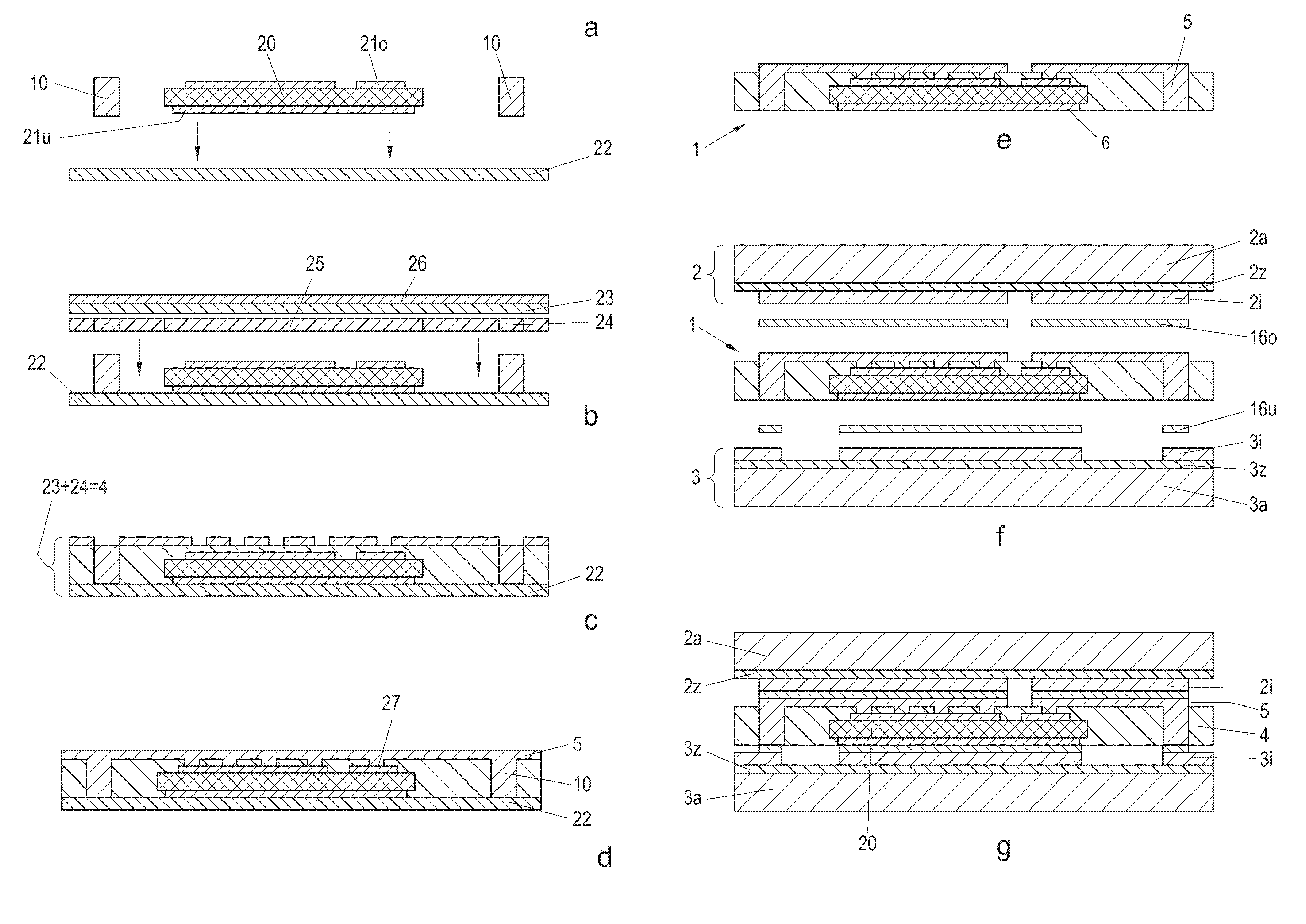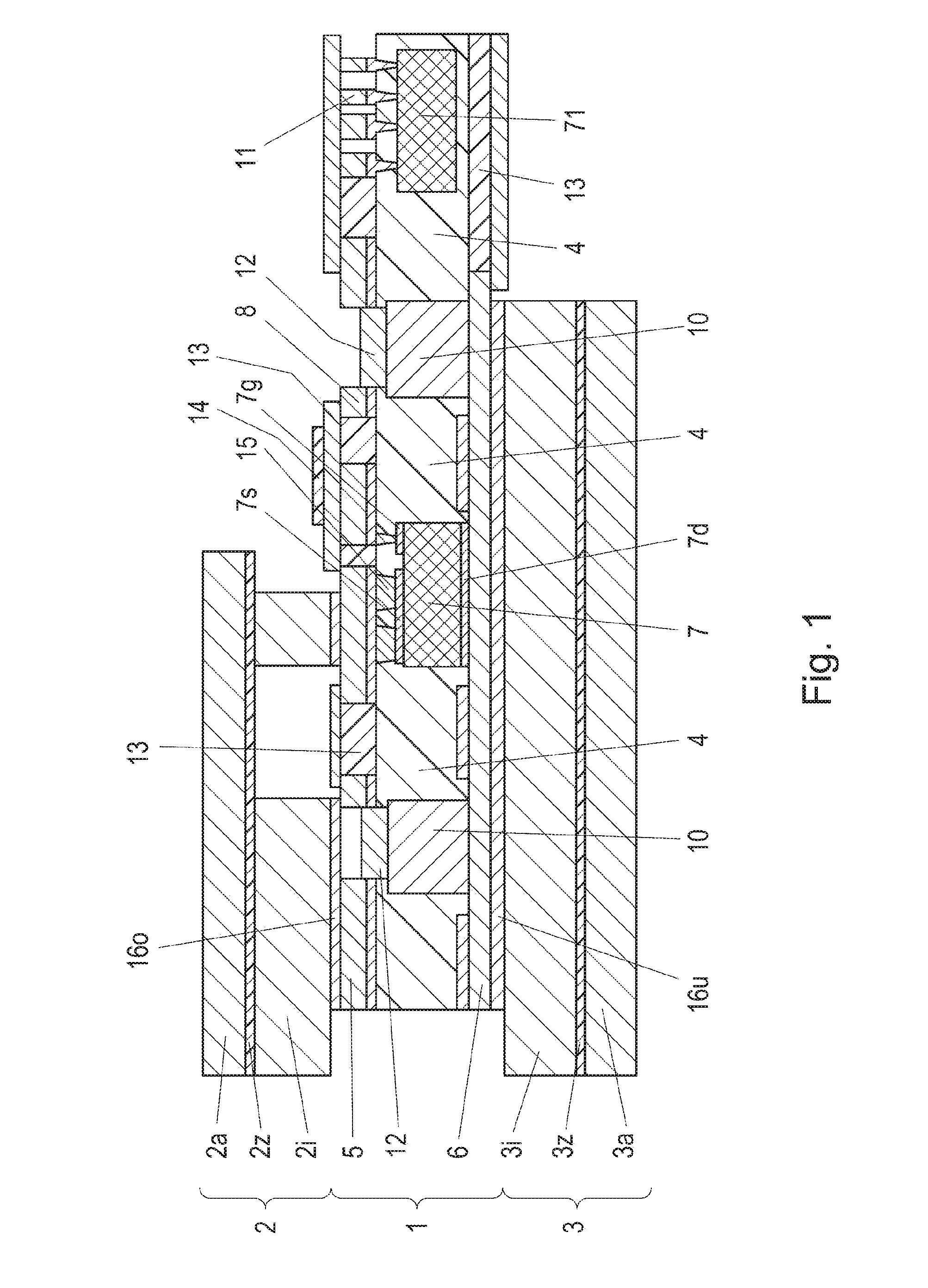Power Module
a power module and power supply technology, applied in the field of power modules, can solve the problems of power loss, power loss, and tendency to detach or rupture, and achieve the effect of small dimensions and low weigh
- Summary
- Abstract
- Description
- Claims
- Application Information
AI Technical Summary
Benefits of technology
Problems solved by technology
Method used
Image
Examples
Embodiment Construction
[0026]FIG. 1 shows, partly schematically, a first embodiment of a power module according to the invention, which has a printed circuit board core 1 arranged between two heat dissipation plates 2 and 3. The printed circuit board core 1 consists, as is the case with a conventional two-sided printed circuit board, of an insulating layer 4, for example a prepreg, which is conventional in printed circuit board construction and which on both sides has a conductor layer, specifically a copper layer. Here, the upper conductor layer 5 is structured so as to form conductive tracks 8, however the lower conductor layer 6 does not necessarily have to be structured in the present example. In the present case an IGBT chip 7, an IGBT driver 71, and two copper inlays 10 are embedded in the insulating layer 4.
[0027]The IGBT chip 7 has three electrode terminals, specifically a lower drain terminal 7d, an upper source terminal 7s, and an upper gate terminal 7g. The terminals of the IGBT chip 7 are adva...
PUM
 Login to View More
Login to View More Abstract
Description
Claims
Application Information
 Login to View More
Login to View More - R&D
- Intellectual Property
- Life Sciences
- Materials
- Tech Scout
- Unparalleled Data Quality
- Higher Quality Content
- 60% Fewer Hallucinations
Browse by: Latest US Patents, China's latest patents, Technical Efficacy Thesaurus, Application Domain, Technology Topic, Popular Technical Reports.
© 2025 PatSnap. All rights reserved.Legal|Privacy policy|Modern Slavery Act Transparency Statement|Sitemap|About US| Contact US: help@patsnap.com



